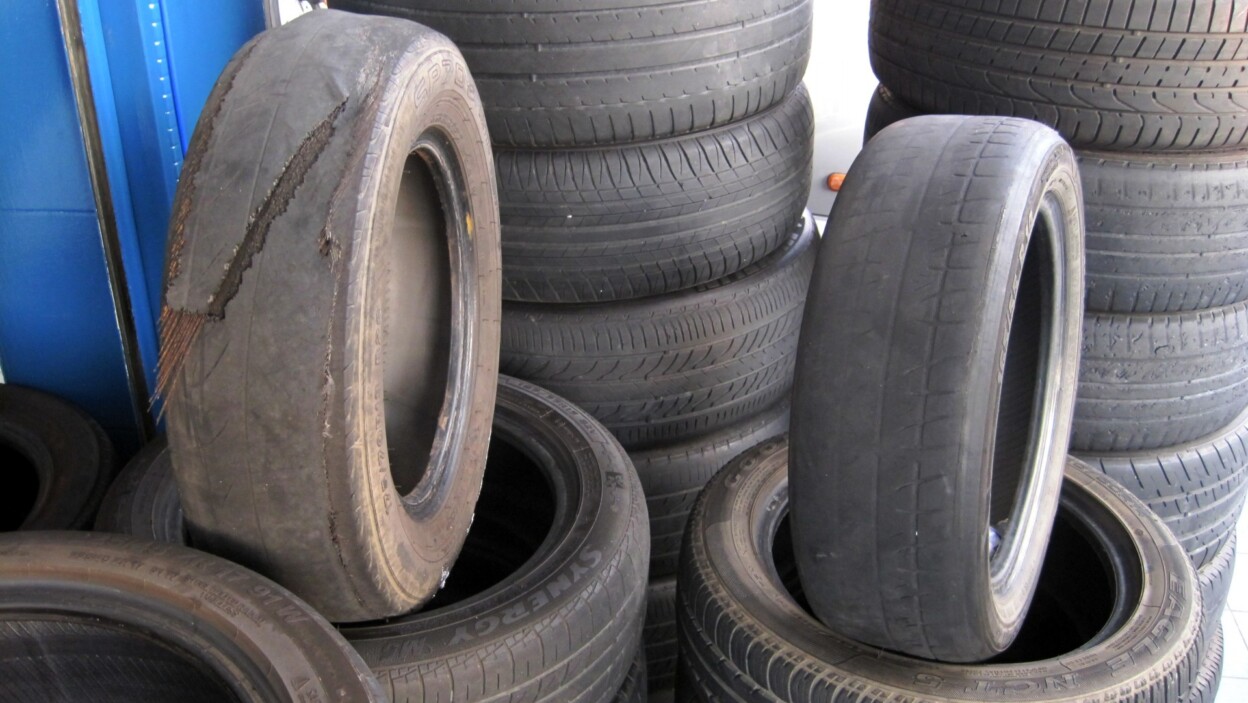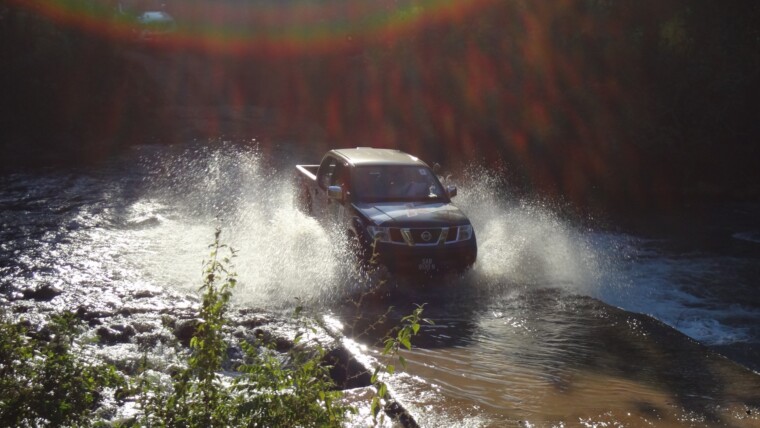I can’t recall the number of times I’ve said what headlines this article, but I’m sure it’s a lot. Recently, whilst visiting Benzone – the workshop where AF shot the PSA video before CNY – I noticed a stack of used tyres that had been removed from various cars, swapped for new ones.
What caught my eye was the tyre in the photo above. I half-jokingly asked my friend Max who works there, if he’d found the tyre at the bottom of a lake somewhere, or lying by the side of the road, and his reply was not that shocking. It had come off an actual car that had been driven to the shop. Seriously, it doesn’t even belong on a tyre-wall at Sepang, much less anywhere near an actual car.
What made this scenario even worse was the fact that the tyre came off a taxi. Yeah, we rely on cabs everyday, and we put our trust in them to get us to our destinations safely, but imagine riding in a car with tyres in this condition! What amazes me is the fact that the owners of the taxi company would allow any cars in their fleet to operate daily with tyres like this.
In the aforementioned PSA video I remember mentioning the ’50sen coin’ test, well just to reiterate, if you’re able to see more than 80% of the coin, it’s time to swap for new rubber. In this instance, that test is redundant, since not only do the tyres look like ‘slicks’, they’ve worn down to the steel belting.
As a general rule of thumb, check your tyre pressures at least once every two-weeks, preferably when they’re cold, with a tyre-pressure gauge. If they’re hot, add a couple of PSi to the manufacturer recommended tyre pressure (the guide is usually stuck to the door-sill on the driver’s side) to compensate for the expansion of hot air inside.
Proper tyre inflation is essential not only in terms of safety, but for better fuel-efficiency too. Remember, under-inflated tyres increase the rolling-resistance (as it is, roughly 20% of a full tank of fuel is used up through frictional-losses just to push the tyres along) and even causes more strain on your engine, which in turn burns more fuel to keep the car going.
In terms of safety, under-inflated tyres can come off the rim in hard corners, and that’s disastrous should the rim dig into the asphalt in mid-corner. Over-inflated tyres cause the ‘contact-patch’ (the area on the face of the tyre that’s actually making contact with the ground) to become smaller, hence, less grip. Both over- and under-inflation are bad for proper tyre-wear too, and you may find yourself having to change tyres sooner than you expected.
Proper alignment, balancing and camber / toe adjustments are also essential for proper tyre wear, and a clear example of that is the tyre on the right, above. Note how there is still some semblance of tread on one half of the tyre but not the other? This happens when the tyre does not ‘sit’ properly on the road, and the abovementioned adjustments are off-kilter. Improper adjustments can also lead to ‘scuffing’. This happens when a tyre makes contact with the fender of the car during cornering, or even heavy braking, and what happens is the eventual wearing away of the sidewall as seen in the tyre below:
‘Visual’ checks are also very important and can be done daily before you start your drive. For example, if one (or more) of the tyres ‘looks’ lower or more deflated than the rest, it could mean a puncture or a slow leak from a faulty tyre inlet valve.
If you happen to actually see a nail solidly embedded in your tyre, don’t remove it. Paradoxically, what’s causing your tyres’ deflation is also helping to seal / plug it. Drive to your nearest tyre shop and get it removed and sealed. It’s the same for a faulty inlet valve. Sometimes you can actually hear a slight ‘hissing’ sound from it. But if you’re not sure, get a bit of soapy water and drop it on the valve tip. Bubbles will form if there’s even a slight leak.
While surface punctures (the ‘face’ of the tyre where the tread pattern is) are easily rectified, sidewall punctures, or fractures, aren’t. A sidewall fracture occurs when your tyre(s) hits something hard and extremely jarring; oft times the rim gets damaged as well. Potholes are the most common culprit of sidewall fractures, and this cannot be repaired. A new tyre is a must, and be sure the shop checks the rim as well. What they will do is after fitting a new tyre onto the rim, they will immerse the whole thing into a tub of water and look for small bubbles emerging from anywhere around the rim.
Now the scary part. A sidewall fracture can occur anytime and sometimes, it happens without you noticing, or even the tyre looking deflated, because it can happen from the inside of the tyre. One way to tell that your tyre has suffered a sidewall fracture is if the tyre develops a noticeable ‘bulge’ on the sidewall. Think of it as you getting a bruise from a hard knock, the area starts to swell doesn’t it? Same thing. Get this tyre replaced as soon as possible.
If you think about it, it’s not all that difficult, sure it’s usually hot outside and pumping your tyres can be a bit unpleasant, (do it at night, that’s what I do) but it’s definitely a necessity, especially when you remember one crucial automotive truism: tyres are the ONLY contact your car has with the road. You can have 1,000bhp and a gazillion torques, but it won’t matter at all if your tyres are shot to hell. I really can’t stress enough just how important they are, and it still amazes me how they seem to be the most overlooked aspect of a car.
Other posts by Chris Wee











